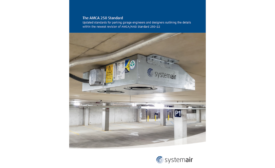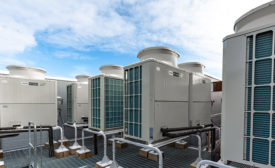White Papers
Systemair Mfg. Inc. released a white paper for parking garage engineers and designers outlining the details within the newest revision of AMCA/ANSI Standard 250-22.
Read More
White Paper
Addressing Updated AMCA 250-22 Standard
Systemair Mfg. Inc. released a white paper for parking garage engineers and designers outlining the details within the newest revision of AMCA/ANSI Standard 250-22.
August 23, 2022
White Paper
ACEC Research Institute: 2021-2025 Engineering Industry Forecast
December 28, 2021
White Paper
Achieving Optimal Indoor Environmental Quality (IEQ) in Commercial Buildings with VRF Systems
November 28, 2021
Get our new eMagazine delivered to your inbox every month.
Stay in the know on the latest HVACR engineering trends.
SUBSCRIBE TODAY!Copyright ©2024. All Rights Reserved BNP Media.
Design, CMS, Hosting & Web Development :: ePublishing








